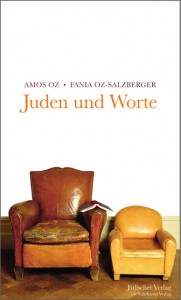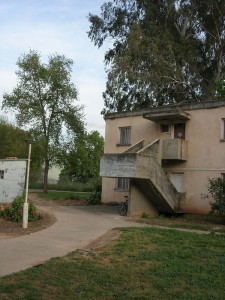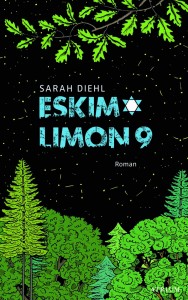 We received a “Best-Blockstöckchen” with a list of questions from Christopher and Johannes, co-authors of “Koschere Melange”, one of our very fave blogs. We = the two Mirjams (on which matter see “Names have meaning“) who have edited the blog since its inception were highly delighted but unfortunately, what with summer vacations and all, it took us somewhat longer than usual to compile our answers. Now, here they are:
We received a “Best-Blockstöckchen” with a list of questions from Christopher and Johannes, co-authors of “Koschere Melange”, one of our very fave blogs. We = the two Mirjams (on which matter see “Names have meaning“) who have edited the blog since its inception were highly delighted but unfortunately, what with summer vacations and all, it took us somewhat longer than usual to compile our answers. Now, here they are:
1. Who blogs? And why?
Here, our colleagues at the Jewish Museum Berlin blog about topics dear to their hearts, about questions that crop up for them or others and about stuff that might otherwise be overlooked.
We blog, because we are repeatedly confronted, in our daily work, with questions, discoveries, or thoughts that we like to share.
2. What makes a (very) good blog (very) good?
→ continue reading
A Birthday Tribute to an Inquisitive Storyteller

Book cover of the German edition of “Jews and Words”
© Jüdischer Verlag im Suhrkamp Verlag
On the occasion of his 75th birthday on 4 May, we wish to congratulate Amos Oz, a great writer who visited the Jewish Museum Berlin no less than twice last year. The award-winning Israeli author—he has received, inter alia, the Peace Prize of the German Book Trade (1992) and, more recently, the Franz Kafka Prize for Literature (2013)—and his daughter, the historian Fania Oz-Salzberger, presented their jointly written book Jews and Words (2012) here last October. In four highly entertaining chapters, “secular Jewish Israelis” draw on the genealogy of reading and writing to trace historical continuity in Jewish traditions. They ask which female poet may have penned the Song of Solomon, reflect on other “vocal women,” and philosophize on matters such as the importance of time and the interplay of collectivism and individuality.

Building in a real kibbutz, photo: Mirjam Bitter

In March 2013, Amos Oz paid a visit to the Museum wearing his literary author’s hat, so to speak, to present his latest publication Between Friends (2013, Hebr. original Be’in Khaverim 2012). The eight interconnected short stories in the volume are set in the fictitious Kibbutz Yekhat and immediately attest the author’s familiarity with kibbutz life. Oz left his intellectual father’s home for a kibbutz at the age of fourteen and a half, and lived and worked there for three decades. His descriptions of typical kibbutz settings—the communal laundry, kitchen, and dining room, the cowsheds and chicken coops, huge orchards and swimming pool—instantly made me feel at home, too, since I lived for a while on a kibbutz in the late 1990s. Discussions at Yekhat about the children’s house, on the other hand, situate the action specifically in the 1950s, the Golden Age of kibbutzim.
The stories deal with the universal constants of human nature: love, loneliness, and the struggle to make major decisions in life. → continue reading
When German friends of mine choose to move from Darmstadt, in Hesse, into the surrounding countryside, I shake my head in disbelief. That an Israeli family would leave Tel Aviv not, as many Israelis do, to move to Berlin (see the German-language blog post offering ten tips for Israelis in Berlin), but rather to the tiny Hessian town of Niederbrechen, seems audacious, if not outright absurd. This scenario, however, is the starting point of Sarah Diehl’s debut novel Eskimo Limon 9. The novel depicts a “very particular kind of culture clash,” as the book’s flap announces.

Book cover
© Atrium publishers
Some of the characters are Israelis, and they have little interest in discussing Germany’s past or the history of European Jews.
“The only thing in the Jewish Museum that will remind me of home will probably be the metal detector you have to go through at the entrance.”
The novel’s Israeli father Chen wishes Germans “would associate us with Eskimo Limon instead of six million dead.” The title of the book refers to a film series of the same name, which aired in Germany in the 1980s as Eis am Stil (Popsicle), “one of the few Israeli pop culture phenomena […] familiar to German audiences.” Many assume that the series is Italian, which—as the author of the novel argues—shows how selective Germans’ perception of Israel can be, and how limited their idea of Jewishness often is.
Other characters are natives of Niederbrechen. → continue reading
 We received a “Best-Blockstöckchen” with a list of questions from Christopher and Johannes, co-authors of “Koschere Melange”, one of our very fave blogs. We = the two Mirjams (on which matter see “Names have meaning“) who have edited the blog since its inception were highly delighted but unfortunately, what with summer vacations and all, it took us somewhat longer than usual to compile our answers. Now, here they are:
We received a “Best-Blockstöckchen” with a list of questions from Christopher and Johannes, co-authors of “Koschere Melange”, one of our very fave blogs. We = the two Mirjams (on which matter see “Names have meaning“) who have edited the blog since its inception were highly delighted but unfortunately, what with summer vacations and all, it took us somewhat longer than usual to compile our answers. Now, here they are:


